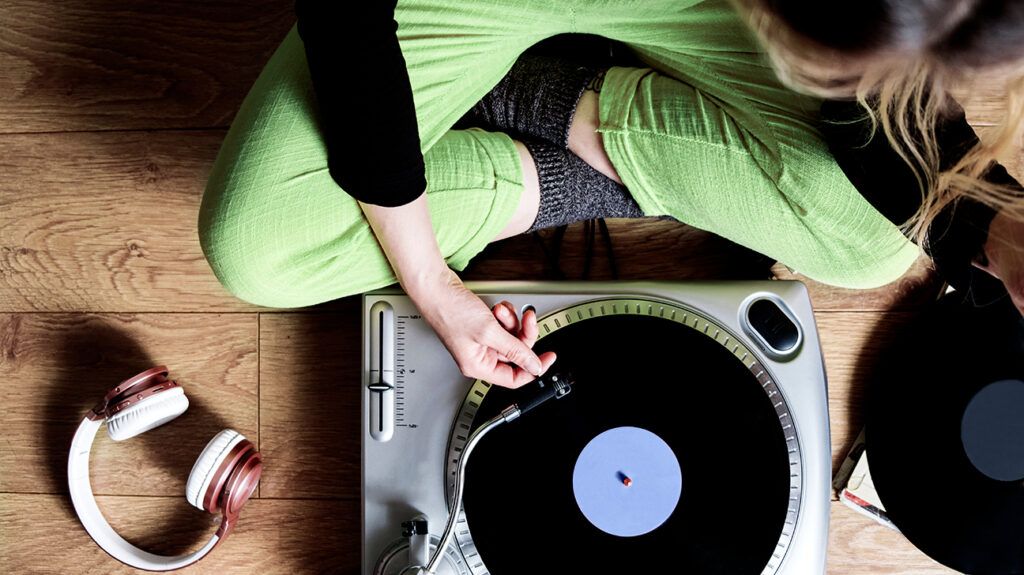Some research suggests music may help relieve migraine symptoms. However, the results are mixed, and more research is necessary to determine how effective music is at relieving symptoms.
Anecdotally, though, some individuals find relief when listening to music, so a person may want to try this in addition to taking medication.
This article explores music for migraine in more detail, including whether music therapy can relieve migraine, and binaural beats for migraine pain.
It also discusses which frequency may be best for migraine, which sounds may worsen or trigger migraine attacks, and when to speak with a healthcare professional.
Headache and migraine resources
To discover more evidence-based information and resources for headaches and migraine, visit our dedicated hub.

A 2022 study found that the expectation of pain relief was a
Therefore, the researchers noted that beneficial effects of music on migraine may be a form of placebo effect. However, further research into the topic is necessary.
Mobile music apps may have some applications in treating migraine. One small 2021 study investigated how effective the smartphone app Music Care was at alleviating migraine symptoms. The music app played music in a particular sequence called the U sequence.
The U sequence gradually relaxes the listener by changing the beats per minute, rhythm, and other musical elements. The researchers found that when people listened to the U sequence, the impact of their migraine attacks decreased over a 3-month treatment period.
Listening to music may also provide some benefits in other therapy areas. For example, in one older
More research is necessary to understand why some people experiencing pain benefit from music and others do not.
Binaural beats are an auditory phenomenon that occurs when a person listens to two different frequencies at the same time. The longer a person listens to binaural beats, the more likely the beats are to alter brainwave activity. This is because the two tones cause the brain to perceive an additional tone, or third tone.
Research investigating the effect of binaural beats on cognition and other mental states is
However, research investigating the effect of binaural beats is slim, and some people may find that binaural beats make their headaches or migraine attacks worse. Consequently, more research is necessary to determine how safe and effective binaural beats are for treating migraine.
The best frequency for migraine is not clear because there is not enough research to reliably state how frequencies and, consequently, binaural beats affect migraine severity.
However, researchers have observed
- Gamma waves 30 to 80 (Hz): Scientists have observed these waves during tasks that demand a high concentration level. Researchers associate these waves with peak concentration and high levels of ability to think.
- Beta waves 13 to 30 (Hz): These waves signal consciousness. They may increase with drowsiness, light sleep, or mental activation. Healthcare professionals often observe
excess beta waves when a person has taken sedative drugs. - Alpha waves 8 to 12 (Hz): These waves represent a person’s typical awake state.
- Theta waves 4 to 7 (Hz): These waves occur during daydreaming and light sleep.
- Delta waves 0.5 to 4 (Hz): These waves are essential for healing and restoring the brain. They occur during deep sleep.
Research focussing on the application of binaural beats
Everyone may respond to certain sounds differently.
Some research indicates that individuals with migraine may be sensitive to sounds
If someone is experiencing migraine episodes more often — or the symptoms are increasing in severity, they should speak with a doctor who can offer advice on different treatments.
Pharmacological migraine treatments
Complementary or alternative therapies
- yoga
- relaxation techniques
- cognitive behavioral therapy
- biofeedback therapy
- avoiding possible migraine triggers
Healthcare professionals may also recommend a person make lifestyle changes, such as exercising more regularly and eating a balanced diet.
Research focusing on music therapy for migraine is mixed, and more research is necessary to determine if it is an effective complementary therapy.
Binaural beats are a phenomenon that may have some potential in treating migraine. However, researchers need to conduct more studies to understand how brain waves affect migraine and why some people benefit more from music therapy than others.
In addition to medication, some complementary therapies a person with migraine may want to try include yoga, relaxation techniques, and cognitive behavioral therapy.
People should speak with a healthcare professional if they experience any new or worsening symptoms of migraine.
